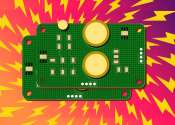Engineers develop low-cost, high-accuracy GPS-like system for flexible medical robots
Roboticists at the University of California San Diego have developed an affordable, easy to use system to track the location of flexible surgical robots inside the human body. The system performs as well as current state ...
May 18, 2020
0
209









